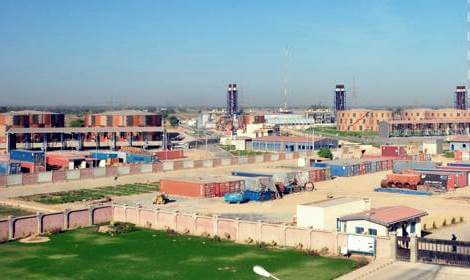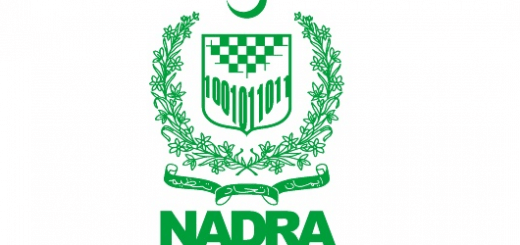Nishat Tek Ltd [Captive Power Unit for Nishat Fabrics]: Company Study
Nishat Tek Ltd.
Braving a blackout……….
Nishat Tek is the first captive power unit to be installed in Pakistan. It has a installed capacity of 33.6 MW and has been set up by the Nishat group to supply power to Nishat Mills and Nishat Fabrics. With this expansion, it is now poised for 25% C.A.G.R until 1997. Yet, it is trading below par and at a P.E of only 2.85. It did not give any dividend last year, and has only declared a 15% dividend this year.This dismal performance is largely due to non – payment of dues by its parent cpmpanies. It is estimated that at present Nishat Tek has almost 300 days of sales receivables with no commitment of any payments in the near future. These cash flow problems are expected to pull its PE to a projected all time low of 0.99 by 1997. As this problem is not expected to go away in the near future, it is recommended that the script should be avoided.
INVESTMENT HIGHLIGHTS
A BRIEF INTRODUCTION:
Nishat Tek was among the first captive power units to come into operation and get listed on the KSE as a result of the favorable private power generation policy by the new PPP government. Nishat Tek started production in January 1992 with an installed capacity of 17 MW which has now increased to 33.6 MW.
Nishat Tek is the first captive power unit to launch its own TFC. It has a 18.00% medium term TFC which has an A+ rating from PACRA ( Pakistan Credit Rating Association ) which signifies a strong possibility for timely redemption. The proceeds from the TFC issue have been used to pay off debt to suppliers and other expansion related technical expenses.
- A rotten egg spoils the whole basket, goes the proverb. In Nishat Tek’s case it is the opposite: A whole lot of rotten and dishonest management has landed this intrinsically good investment into a script which should now be avoided. The management of Nishat group has taken the investors in this captive power unit for a ride by abusing the incentives they had. The resulting loss in the consumer confidence can be guaged by the fact that the script is now trading below par.
- 1995, nearly 72% of the current assets of Nishat Tek were tied up in receivable owed largely by the parent concerns. Their is a risk involved that the payment of these receivables might be further delayed due to the seemingly endless crisis plaguing the Pakistani textile sector. This uncertain situation is the primary motive for me recommending a hold on this scrip which is otherwise a healthy fellow.
- Nishat Mills and Nishat Fabrics has largely been able to keep its head above the water only due to a large amount of deferred liabilities it has accumulated by using the government incentives for capital investment under which tax liabilities could be defferred to a later date. If these two concerns stop carrying these expansions, these deferred liabilities will turn into current liabilities and will further dry up the cash flows of these concerns. Nishat Tek in such a case will have to wait to get its due money which will in turn further aggravate this problem.
- The EPS growth rate is expected to slow down in the coming years after a drastic upsurge in the aftermath of the 1995 expansion.No further expansion and resulting jump in earnings will take place now and the earning growth are estimated to settle down at around 15% – 20%.
- Nishat Tek has a Rs.250 million TFC issue on which interest charges at the tune of 18% have to be paid. As creditors have first right on the earnings, and with serious receivables problems the owners of the company will have to be satisfied with a lower return. This TFC forms the backbone of Nisha Tek’s debt financing expansion.
The Captive Power Sector is allowed a debt: equity ratio of 60:40. Nishat Tek is the first unit to capitalise on this power
TFC STRUCTURE AND REDEMPTION SCHEDULE IN RESPECT OF EACH OF THE SIX TFC’s
Amount Invested :Rs.5,000
Expected Profit :18%p.a. payable semi – annually in arrears
Redemption Value :Principal + Expected Profir
| Month | principl | Rede- -mption Value | profit | W.HTax | sakat | Redmpt-ion Value Net | Redemption lessWT | Redemption less Sakat |
| 6 | 1.00 | 451.0 | 450.00 | 45.00 | .025 | 405.97 | 406.00 | 450.97 |
| 12 | 1.00 | 450.9 | 449.91 | 44.99 | .025 | 405.89 | 405.92 | 450.88 |
| 18 | 1.00 | 450.82 | 450.82 | 44.98 | .025 | 405.81 | 405.84 | 450.79 |
| 24 | 1.00 | 450.7 | 450.73 | 44.97 | .025 | 405.73 | 405.76 | 450.70 |
| 30 | 1.00 | 450.63 | 450.64 | 44.96 | .025 | 405.65 | 405.68 | 450.61 |
| 36 | 1.00 | 5,444.5 | 5,444.5 | 44.96 | 124.87 | 5,274.7 | 5,399.6 | 5,319 |
| Total | 5,000 | 7,698.6 | 2,698 | 269.8 | 125 | 7,303.3 | 7,428.8 | 7,573.6 |
| IRR | 18.00% | 15.51% | 16.20% | 17.331 |
- Nishat Tek has announced a dividend of 15% for 1995 – 96 after a nil return last year. A better, risk free return can be earned justby putting money in a bank
This script, for all these reasons should thereby be avoided.
CAPTIVE POWER SECTOR: MARKET OVERVIEW
The captive power sector includes those companies that supply electricity to their main concern companies and/or to nearby industrial units. The individual plant capacities of plants which have been put up range from 1MW for dadabhoy cment to to 47MW for Sitara energy, depending upon the requirement of the captive consumer. A attractive incentive package has been provided by the government to this upcoming sector. Some of the incentives and strong points of this sector are;
- All power companies are exempt from corporate income tax and are allowed the import of machinery and plant without any sales tax, customs duty, Iqra surcharge, or any other import tariff.
- Because of absence of any major entry and operational tariffs and taxes, and also because of guaranteed sales the pay back period for these captive power units is, at least theoretically speaking, relatively short.
- The transmission losses ( T&D ) losses are a mere 3% as compared to around 30% for WAPDA and KESC. This efficient redirection of the electricity produced has resulted in jacking up the gross profit margins in the average range of 30% – 40%.
- The captive power units have a capacity to attain up to 80% capacity utilization which can be anywhere in the range of 15% – 25% above the current levels. This production efficiency which can be adjusted for demand variances will also jack up revenues.
- Due to he above mentioned reasons, captive power units can generate and distribute electricity at a lower cost than the giants like WAPDA and KESC. Therefore, It has been able to sell electricity at a discount of 10 – 12% to their parent companies. This coupled with the advantage of uninerrupted power supply forms the backbone of captive power demand.
On the political front, the going was very good for the power sector during the PPP government days. This factor could now turn against it if’s political adverseries take over in Islamabad. It is no big secret that in Pakistan entire industry and sectors are victimized by a new regime only because they were the pet projects of the old one: banking and cement sector can be taken as examples of such immature behavior. Along with this potential threat, a few more economically reasonable difficulties which are or can be in store for this sector are:
- the biggest threat to investment is the managemt itself. Most of these units have been setup by the big industrial houses of Pakistan such as Nishat, Kohinoor, Sitara, Daadabhoy e.t.c. The captive power units will be of secondary importance to the owners of these groups who have huge amounts invested in other sectors such as textile and cement. Owing to the financial difficulties these sectors are facing, the smaller captive power units can intentionall or unintentionally be ignored.
- Majority of these units have been set up for in house power generation of textile units. The textile sector is continually showing a dismal performance despite incentive plans by the government like rupee devaluation, provision for deferred liabilities e.t.c. This unhealthy situation might have to be passed on by these units to their downstream supporting industries – thus causing problems for an intrinsically strong captive power sector which would have to suffer for no fault of its own.
- A possible upward revision of 10% sales tax and 15% customs duty.
- Revision of the 5% regulatory tax.
- Periodic increases in the prices of furnace oil now that the government has tied it prices to the international market. This, along with almost continuos devaluation’s of the Pakistani rupee has made the oil imports increasingly expensive. It is estimated that petroleum product prices will incrase by an average of 15% for the last five yars of this decade.
- Expected hike in the prices of electricity due to the above mentioned reasons might bring the demand down as parent companies might not be able to pay.
- The captive power units might not be able to sell off their excess production to public utilities in the future as their is already a huge influx of private power projects.
On paper this sector is a potentially good invstment with good and growing rturns expcted. However, only those scripts should be cinsidered where no doubts about the management’s integrity exist.
COST STRUCTURE
The major expense of running a power plant is the cost of furnace oil which accounts for almost 85% of the total operational expenses. Captive power units have entered into Fuel Supply Agreement (FSA) with the government on a long term basis under which the government guarantees them the supply of the fuel needed for operations. As the arrangement is under contract basis, it will be easier for the government to withdraw these incentives.
The threat to power companies is that they have taken a major exposure to the rapid price fluctuation of the furnace oil. Prices of furnace oil showed only a moderate increase of about 5% during 1990 – 95. However, it is expected to increase in the bracket of 10% – 15% for the last five years of the decade. This hike is largely due to increase in demand for furnace oil, continuing rupee depreciation, limited supply of petroleum products due to infrastructure problems and a possible levying of taxes and tariffs on oil products. This huge dependence of captive power units on oil would squeeze their margins in the long run, and the resulting price hikes would fuel inflationary trends in the market place.
TARIFF STRUCTURE
The captive power units also have the option of selling any excess or spare electricity to the two goverment utilities: WAPDA or KESC. The tarrif structure for this electricity will be the same as is for the IPP’s.
Under the policy investors can propose their own tariff schedule provided:
- The average tariff for the first ten years does not exceed US cents 6.5/ KWH.
- The annual base tariff does not exceed US cents 8.33/ KWH.
- The levelised tariff for the life of the project ( assumed at 30 years for Hubco, 22 years for others) does not exceed US cents 5.9/ KWH.
Power purchase agreement
The government has entered into long term power purchase agreements of 22 years with the captive power companies from the commercial operations date, under which WAPDA is obliged to pay for the excessive or available dependable capacity of the plant whether or not dispatched. It may also in accordance with economic principles and operational limitations dispatch the plant up to the available net capacity of the plant from time to time.
Capacity payments
The main source for the company is the capacity purchase price which is available to the unit regardless of whether the plant is actually dispatched or not. This capacity purchase price is intended to cover the assumed level of fixed costs that are expected to be incurred in constructing, operating and maintaining the plant including insurance and debt service and an element intended to provide a base return of the company’s equity investors. Capacity payment is calculated on the basis of the total estimated dependable capacity of the plant (60% of total capacity).
The tariff is made up of two elements
- To cover the company’s financing costs, and
- To cover insurance and administrative costs, the fixed operations and maintenance costs and a base return to the equity holders.
Both these elements which constitute tariff are subject to different levels of taxation. The government will stop capacity payments when the supply is interrupted for 18 days and the cause of interruption is not indemnified by the implementation agreement.
Energy payments
The power actually delivered to WAPDA is paid for by in arrears of the fuel cost component before the commercial operations date and energy purchase price thereafter. Subject to maximum prevailing rates from time to time, the company can fix the rates. This purchase price shall constitute of a fuel price component and a variable operations and maintenance cost component.
Supplementary charges
The company is entitled to submit to WAPDA invoices for supplemental charges which have occurred in the preceding month. Supplemental charges compensate the company in respect of certain pass through items listed in the power purchase agreement including most particularly penalties incurred by the company for changes in the fuel deliveries under the Fuel supply agreement. This also includes charges for unit start up, hot stand by and safety improvement charges.
Fuel supply agreement
The fuel supply agreement provides that the company shall purchase from PSO and PSO shall supply all the captive power company requirements for fuel, diesel, greases and additives for the plant during the 22 year term of the fuel supply agreement with effect from the specified initial delivery date. PSO is obliged to deliver fuel and oil to a nominated delivery point at the plant by pipeline, rail or road. The company shall agree to construct the necessary facilities for the receipt of such fuel in accordance with the internationally accepted standards of such storage sites, while PSO shall be obliged to construct, design, install and maintain at its own cost the equipment and facilities necessary for the delivery of fuel at the delivery point.
There are provisions for the advance consultation as to the volume of fuel to be supplied and 60 days in advance the company is obliged to submit a firm order for the fuel based on the estimate of the dispatch level provided to the company by WAPDA. The company is entitled to reduce the order and PSO shall accept a reduction of 10% or less without imposing any penalty. If the reduction is more than 20%, the company is liable to pay tanker demurrage costs to the extent of change of location as instructed by WAPDA.
NISHAT TEK LIMITED
INCOME STATEMENT
FOR THE YEAR ENDED …
| 30 JUNE,97 (E) | 30 JUNE,96 (E) | 30 JUNE,95 (A) | 31 DEC.,94 (A) | |
| Sales | 470,350 | 409,000 | 151,315 | 258,826 |
| C.O.G.S | 272,694 | 237,125 | 87,913 | 162,047 |
| Gross profit | 197,656 | 171,875 | 63,402 | 96,779 |
| G&A expenses | 5,511 | 5,012 | 2,179 | 5,120 |
| Operating profit | 192,145 | 166,863 | 61,223 | 91,659 |
| Other income | 11,000 | 10,000 | 10,222 | 10,210 |
| 193,145 | 176,863 | 71,445 | 101,869 | |
| Financial & other charges | 50,000 | 53,000 | 11,814 | 19,433 |
| Workers fund | 7,590 | 6,900 | 3,003 | 4,156 |
| 57,590 | 59,900 | 14,817 | 23,589 | |
| PBT | 127,965 | 116,963 | 56,628 | 78,280 |
| Tax provision | N/A | N/A | 1,294 | (1,294) |
| Profit after Tax | 127,965 | 116,963 | 57,922 | 76,986 |
ASSUMPTIONS:
- Thre is an expansion of 48% (from 22.6 MW to 33.6 MW) in th production capacity of the plant. The capacity utilisation for Nishat Tek is 72%. Threfore, production will increase by around 35% ( 48% * 72%). As all the electricity generaed is sold off to the parent companies, sales are also assumed to increasee by the same proportion.
- Sales: (302,630 * 135) = 408,850 ( Rounded off fiigur given above)
- 85% Cost of the goods sold (C.O.G.S) is taken up by residual furnace oil (RFA) and other related petroleum products. The price of these petroleum products is assumed to grow by an average of 15% for the rest of this decade. O.G.S constitute an average of 60% of the sales revenue. Sales are increasing by 35%. Thus, the Rupee figure of the C.O.G.S will go up by around 21% (60% * 35%). Thus, the projected component of fuel cost is expected to rise by around 35% – 40%. `The other 15% of the C.G.S are assumed to increase at the inflation rate of roughly 10%.
- Fuel Costs: ( 175,000 * .85 * 1.4) = RS. 208,250
- Other C.G.S Costs ( 175,000 * .15 * 1.1) = RS.28,875. Thus, projected C.G.S for 1995 – 96 is Rs.220,000. 1994 is taken as a base year for generalisation purposes.
- Or 1997, both sales and C.G.S are assumed to grow by 15%. This 15% is the increase in operating costs due to fuel price increases and other costs linked to the inflation rate. Here is no plan for any further expansion and the fuel costs are allowed by the goverment to b passd down to the end consumer
- G&A expenses are increasing because of two reasons. Firstly, because of inflation and secondly because of expansion more personnel are required to run the plant. These expenses are assumed to grow by 15% for the first forecasted year and 10% for subsequent years.
- Other income stays in the same range of Rs.10 million – 12 million as no sudden upsurge or downtrend is expected.
- The most significant jump in costs comes from financial charges. An 18%, Rs.250 million issue was launched in 1995. For the first projected year, the charges on this TFC will be Rs.45 million. Theinterest on the long term loans comes out to be around Rs. 8 million according to the loan amortisation schedule projected from the balance sheet. The principal redemption is largely carried out in the third year with only token repayments for the first two years Therefore, the interest component of the financial charges arising from the TFC is roughly the same for the first two years.
- The workers fund is estimated to go up by 15%. This is because of the increase in work force has increased. For the next year, it is assumed to be growing at 10% projected inflation rate.
- Captive power units, under the 1994 incentive package are tax exempt.













